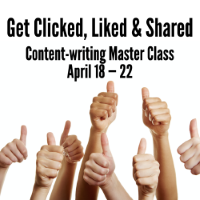Zimmer Inc. uses the P-S-R format
Roz Chast’s “Story Template” offers a good structure for corporate storytellers to follow:

- Problem (“Suddenly”)
- Introduction (“Once upon a time”)
- Solution (“Luckily”)
- Results (“Happily ever after”)
Here’s how it works, courtesy of a patient case study from a Silver Anvil Award-winning campaign by Zimmer Inc. and Public Communications Inc.
When Zimmer introduced the first replacement knee for women, the company promoted it with, among other things, a series of patient stories like “After 10 Years of Pain, She’s ‘Living Life Like a 50-Year-Old.’”
Start with the problem.
Note how much of the real estate in this release is dedicated to the problem. That’s because the worse the problem is, the more dramatic the solution appears.
So pile on the tangible details — “knees of a 70-year-old,” “It was agony to … cook elaborate Sunday family meals,” “My daughter began doing my clothes shopping” — to show, instead of tell, how bad it was.
Nothing worked except constantly icing her knees, which only lasted temporarily, and taking ibuprofen, which bothered her stomach.
So she suffered. Little by little, Louise stopped doing the things she enjoyed because they were just too painful.
It was agony to stand and cook elaborate Sunday family meals or to whip up home-cooked lunches for her husband, Joe and sons, Joe Jr. and Tony, when they took mid-day breaks from the family mushroom-growing business. She could no longer decorate her house during the holidays, gardening went by the wayside and even housecleaning became impossible.
‘My daughter began doing my clothes shopping and I had to have help doing everything, even cooking meals and grocery shopping,’ said Louise, 50, who lives in Eastern Pennsylvania. ‘Nighttime was the worst. The pain was excruciating. I had to move and move and move until I could get my knees adjusted so I could get myself out of pain. I had to take medication for sleeping because I had so much pain in my knees that I couldn’t sleep.’
Louise tried to exercise, but the treadmill was too difficult – too much pounding – and then even riding the exercise bike bothered her knees. She swam, but her knees hurt afterward, so she stopped doing that, and she gained weight. The more weight she gained, the more her knees bothered her.
She missed shopping, having lunch and going out with friends. ‘My mind still wanted to go but my body wouldn’t let me,’ Louise said. ‘I was feeling old and was being a burden to my family. I felt like I was missing out on life.’
In recent years, Louise had to push through her knee pain, serving as a full-time caregiver for her husband, who was undergoing cancer treatment. Despite the severity of her ailing knees, she hobbled along.
Then came the final straw.
‘Joe and I found out we were going to be grandparents,’ and I said, ‘Forget it, I’m not waiting any longer.’ I wanted to be an active grandmother and to enjoy my new granddaughter.’
Sandwich the introduction.
The “introduction” is essentially the background section. It includes the five W’s of the story, like: What age was the patient? Where did she live? What did she do for a living?
That’s not — I hope! — the most scintillating part of your story. And that’s why you want to lead with the problem.
You can either move the introduction below the lead into a background section to create a classic feature-style story. Or you can break it into parenthetical phrases interspersed throughout the piece, like, “said Louise, 50, who lives in Eastern Pennsylvania.”
Describe the solution.
The solution is probably going to be your organization’s product, service, program or plan. Remember: The real story here is how your stuff solved the problem. So focus on that, not on every detail of the product itself. Instead, keep this section short and to the point.
Louise had surgery several months after her 50th birthday, and although recovery from having both knees replaced at the same time was hard work…
Close with the results.
Here’s where you pile on tangible details about how your product or service changed someone’s life (or a company’s bottom line, or … you get it). Quantify and specify. Name names and number numbers.
And get the results in the customer’s or client’s own words. That makes for a better testimonial.
Beyond all that, she can’t wait to travel, first to visit her daughter, Anita, in law school in Michigan. Next summer she and Joe are looking forward to vacationing in Italy, a trip that was originally scheduled for the past summer but was canceled because she couldn’t walk. ‘Next year I’ll be running all over Europe with my knees,’ she giggles.
“Her only regret?
‘I wish I would have done it sooner,’ said Louise. ‘My advice to people is “Don’t wait.” Why suffer? I had 10 years of pain.’
Try the story template.
How can you use this story template to make your next case study, testimonial or narrative more dramatic and powerful?
How can you boost content marketing analytics?
How do you triple readership for your blog post? Get people to read 520% more of your story? Increase shares, likes and followers?
Learn to increase engagement at Get Clicked, Liked & Shared, content-writing workshop that starts April 18.
You’ll learn to write content readers want to read. Get fill-in-the-blanks templates for building popular content-marketing pieces. Find out how long content-marketing pieces, mobile headlines, paragraphs, sentences and words should be. Discover how to get the word out even to nonreaders.
You’ll leave with scientific, proven-in-the-lab best practices for writing content marketing pieces that travel the globe instead of just staying home on the couch.
Save up to $100 with our group discounts.

